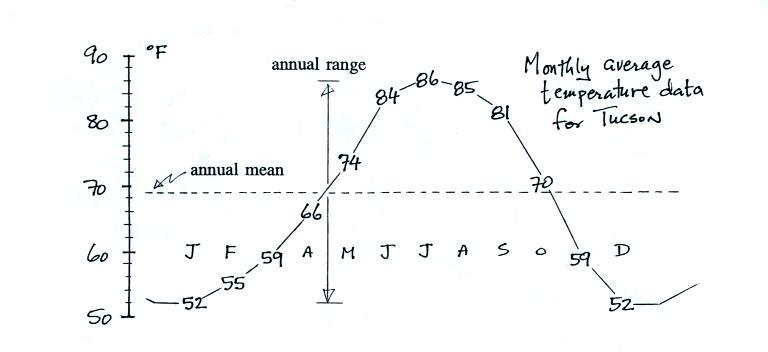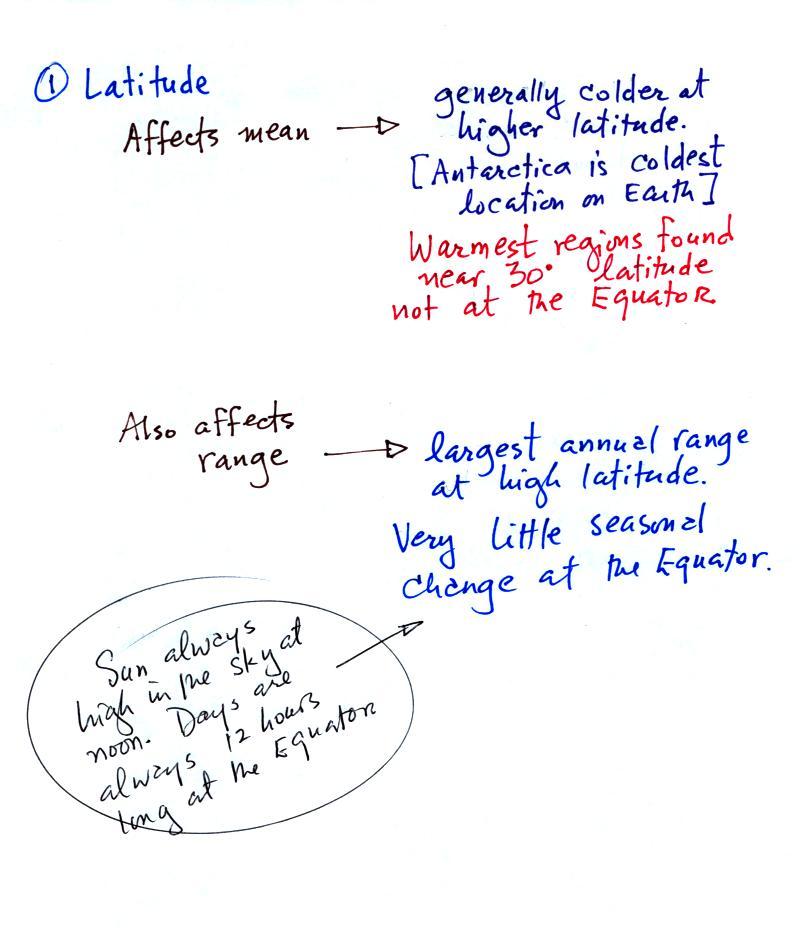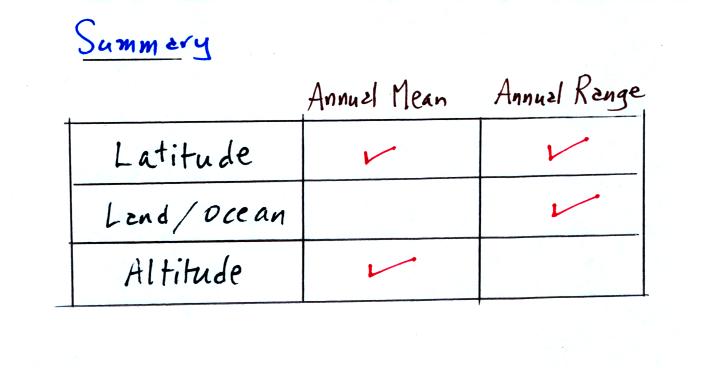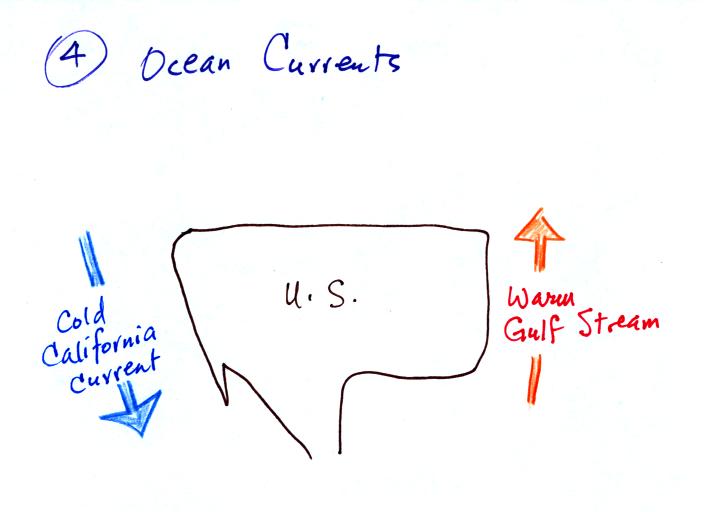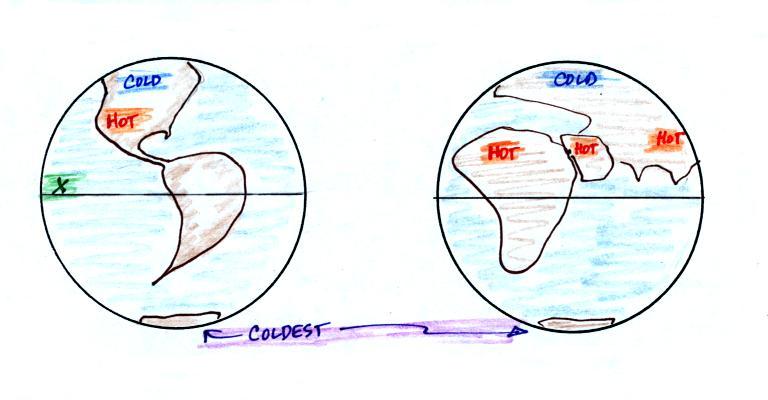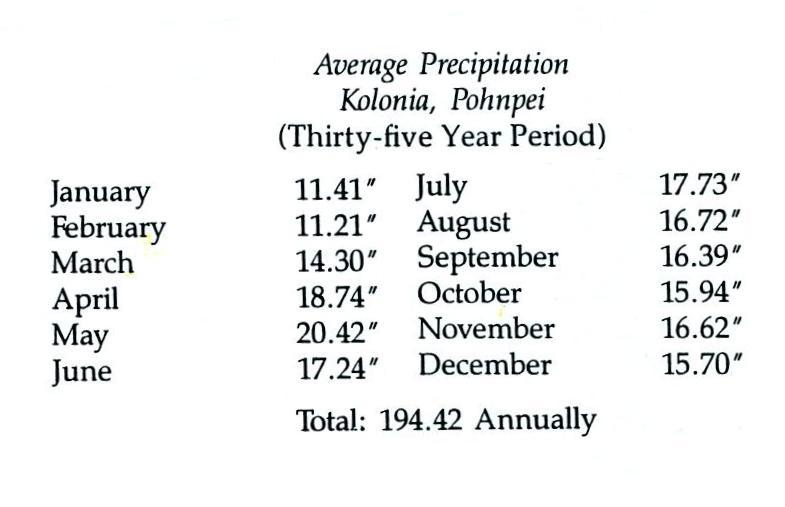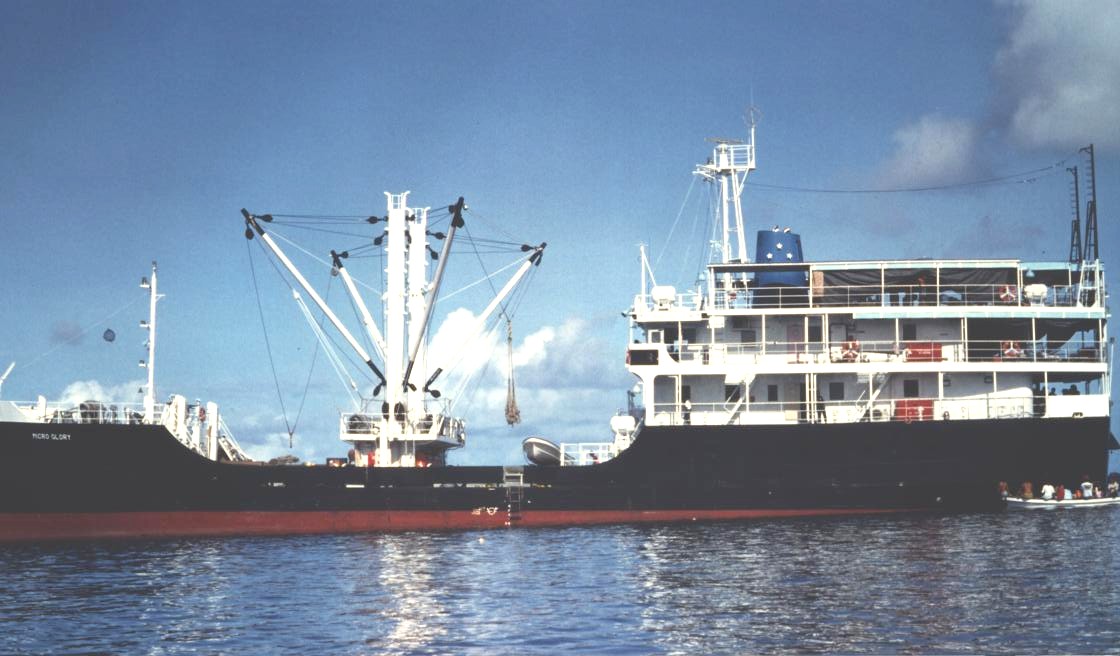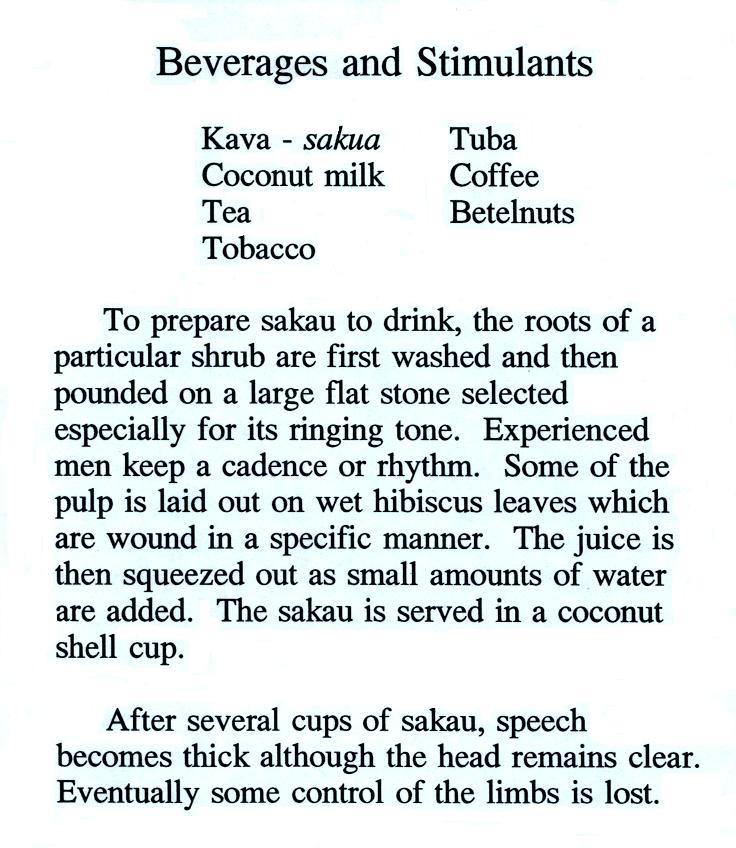How would you describe Tucson's climate? Hot and
dry?
You're basically conveying information about temperature and
precipitation. Here we'll mainly concern ourselves with temperature.
With just two
numbers, the annual mean or annual average temperature and the annual
range of temperature, you can give someone a pretty complete idea of
the
temperature in Tucson (or some other location) and how it changes
during the year.
Before we look at the factors that determine annual
mean and range of temperature, here are some average temperature and
precipitation data for Tucson.
1. Monthly average temperatures are plotted
here. To
determine the annual mean temperature add the twelve monthly average
temperatures and divide by 12 (68.5 F for the data shown here).
You can get a pretty good estimate
of the annual mean temperature by adding the highest and lowest average
monthly temperature values and dividing by 2 (69 F).
Average Monthly Temperature and
Precipitation data for Tucson
Average
Monthly Temp
|
Month
|
Average
Max Temp
|
Average
Min Temp
|
Difference
|
Precipitation
|
52
|
Jan
|
64
|
39
|
25
|
0.99
|
55
|
Feb
|
68
|
42
|
26
|
0.88
|
59
|
Mar
|
73
|
45
|
28
|
0.81
|
66
|
Apr
|
82
|
50
|
32
|
0.28 (see
Note 2)
|
74
|
May
|
90
|
59
|
31
|
0.24
|
84
|
Jun
|
100
|
68
|
32
|
0.24
|
86
|
Jul
|
100
|
73
|
27
|
2.07 (see
Note 3)
|
85
|
Aug
|
97
|
72
|
25
|
2.30
|
81
|
Sep
|
94
|
68
|
26
|
1.45
|
70
|
Oct
|
84
|
57
|
27
|
1.21
|
59
|
Nov
|
72
|
45
|
27
|
0.67
|
52
|
Dec
|
65
|
39
|
26
|
1.07 (see
Note 4)
|
Notes
2. April, May, and June is generally the driest time of
year in Tucson. This is reflected in the low montly average
precipitation values. It is fairly common to go a month or more
without rain at this time of year.
Because the air is dry and the skies are
cloud free, there is generally a large difference between daytime high
and nighttime low temperatures.
3. The summer thunderstorm season usually begins in early
July when the daily average
dew point temperature remains 54 F or above for three days in a
row.
July, Aug, and Sept. are usually the wettest months of the year in
Tucson. Tucson gets nearly half its annual rainfall during the
summer thunderstorm season.
Note how the difference between daytime
high and nighttime low temperatures decreases once the summer
thunderstorm season gets underway. This is due to the increase in
humidity and cloud cover. Clouds will lower the daytime high
temperature and raise the nighttime minimum temperature.
4. During the winter, middle latitude storms will
occasionally drop far enough south to bring precipitation to southern
Arizona. Sometimes these storms will pull up moisture from the
tropics and rainfall amounts can be significant.
There are three or four main factors that determine a region's annual
mean and annual temperature range.
Latitude affects both the annual mean and the annual range of
temperature. The polar regions have colder annual average
temperatures than any other location on earth. The South Pole is
in the middle of a large land mass (Antarctica), the North Pole is
ocean. Much of Antarctica is found at high altitude. These
factors work together to make Antarctica and the South Pole colder than
the
North Pole. The
hottest regions on earth are found near 30 latitude, not at the
Equator. This is, if you remember, where the optimal combination
of sun elevation angle and length of day delivers the greatest amount
of
sunlight energy to the ground.
The annual range of temperature increases with increasing
latitude. There is little or no seasonal change at the Equator.


Water has a higher specific heat. Some of the
incoming energy is
used to evaporate rather than warm water. Incoming sunlight
penetrates into a body of water and is used to try to warm a larger
mass of water. These three factors mean that water will warm more
slowly and won't get as hot during the summer as land. There is
also a larger diurnal temperature range over land than over
ocean. If you've
ever been to the beach in the summer you probably remember that
the sand on the beach gets much hotter during the day than the ocean
water. We'll see this effect in action in a later lecture on
satellite photographs.
The table below summarizes the three controls of
temperature that we
have covered so far. One of them affects both the annual mean and
annual range, one affects just the mean, and the other just the annual
range.
One final factor:
Cities on the west coast and east coast of the US can
have very
different climates even if they are at the same latitude and
altitude. A cold southward flowing ocean current is found along
the West
Coast. The warm Gulf Stream current flows northward along the
East Coast. Winds at middle latitudes generally blow from west to
east. The city on the West Coast will feel the full moderating
effect of the ocean. The city on the East Coast will be affected
by the Gulf Stream current and also by winds blowing across the
interior of
the US.
A graphical summary. You find cold locations
over land at high
latitudes (Northern Canada, Siberia). Antarctica is the coldest
region because it is found at high latitude, is a land mass, and much
of Antarctica is high altitude. The hottest regions on earth are
found at low altitude in the middle of land masses near 30 latitude.
What kind of climate would you expect to find at Point X in the figure above.
I.e. at a point near the Equator
in the middle of
the Pacific Ocean? The answer
to the question includes a short story that features such things as
carved wooden pigs, tropical island
beverages, and something called
betelnut.
The photograph above, taken on Kapingamarangi Atoll, shows a
group of people that were participating in a very large international
project called the Tropical Ocean Global Atmosphere/Coupled Ocean
Atmosphere Response Experiment. The instructor of this course and
one of the other people in the photograph had just installed and tested
the tall white lightning detector seen at the edge of the
photograph. They were about to leave Kapingamarangi and travel to
Papua New Guinea to install detectors at two additional sites.

It's not particularly easy to travel to Kapingamarangi, it is very
remote. At the time of our field experiment, we had to first fly
to Pohnpei (an
island in
the Federated States of Micronesia). We planned then to travel
onboard a cargo ship that normally sails to Kapingamarangi once a
month. In our case we discovered, after reaching Pohnpei, that
the ship departure had been delayed. We would eventually wait 3
weeks on the island of Pohnpei before departing for
Kapingamarangi. That
gave us plenty of time to visit and learn about the island of Pohnpei.
Pohnpei is a fairly large island and, together with some of
the
other Micronesian islands, is a popular snorkeling and
scuba
diving destination. Pohnpei also has a weather station that
is
operated by the US National Atmospheric and Oceanic Administration
(NOAA).
Pohnpei
is located at low latitude in the middle of the Pacific
Ocean. Both of those factors will reduce the annual range of
temperature. The annual range is less than one degree
(it is about 34 F in
Tucson)!
The average monthly
temperatures in Pohnpei range from a high of 80.8 F in February and
March to a low of 80.0
F in July. The all-time record high temperature is 96 F, it has
never dropped below 66 F on Pohnpei.The controls of
temperature that we have learned about can have quite an effect.
The following precipitation data for Kolonia, the largest
town on the island, show that Pohnpei is also
one of
the
rainiest locations on earth
Close to 400 inches of rain may fall in the interior of
Pohnpei. The rainiest location on earth is in Hawaii with about
460 inches of
rain per year.
We learned quite a bit more about life in the tropics during our 3
weeks on Pohnpei. For example we saw a lot of pigs and learned
about their importance in the local culture and economy.
The Micro Glory (shown below) is the ship that carried us from Pohnpei
to Kapingamarangi and back. The ship carries supplies
to the people on Kapingamarangi and some other small islands along the
way.
The islanders pay for the supplies with
pigs (the pigs are later sold on Pohnpei). We shared deck space
on the
Micro Glory on the trip back to Pohnpei with 20 to 30 pigs (they were
hoisted aboard in nets).
Most of the lower deck in the photo above (under the
hoists)
was occupied by pigs on the return trip. One of the pigs died on
the return trip - that was a very serious matter.
We also had a chance to sample some of the local beverages.
Drinking kava or sakau (as it is called on Pohnpei) turns your
mouth and
throat numb. It is supposed to relax you, make you sleep more
fully, and doesn't seem to have any after effects. Until fairly
recently
you could buy kava in pill form at local supermarkets. However,
because of reports that it can cause serious liver problems, that is no
longer the case. There are no reports of liver problems when
drinking kava that has been prepared in the traditional way. Here is a link to a
Wikipedia article on kava.
We never tried betelnut. Areca nuts are wrapped in betel
leaves
and chewed together with lime (lime is pretty caustic, that is one of
the reasons I didn't try betelnut). The resulting mixture is a
mild
stimulant (some people add tobacco to the mix). The most
interesting aspect, however, is that chewing betelnut colors your mouth
and teeth
bright red.
You
don't
swallow
betelnut,
you
spit
it
out. You see the bright red stains
on sidewalks and the ground wherever you go. Most hotels will
also have a large sign near the entrance reminding guests not to chew
betelnut inside the hotel. You can read more about betelnut here.


